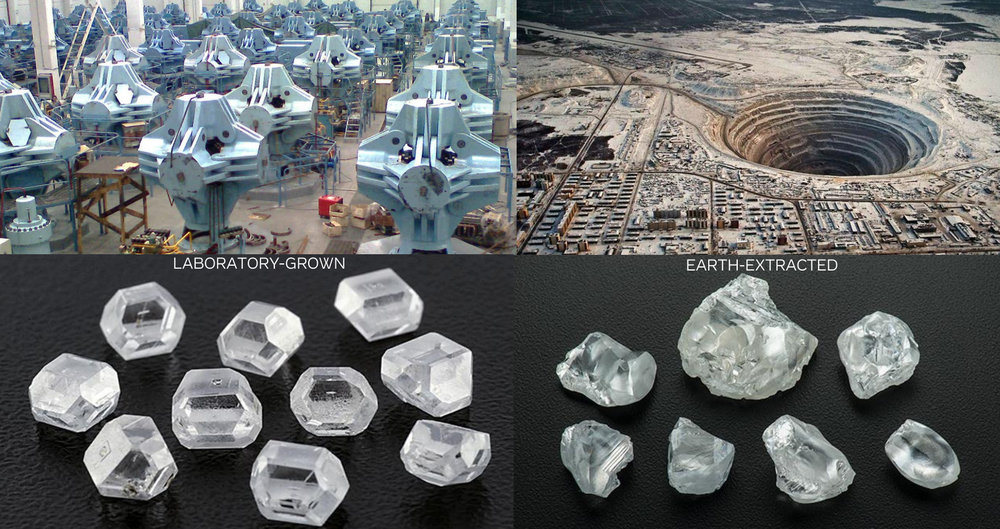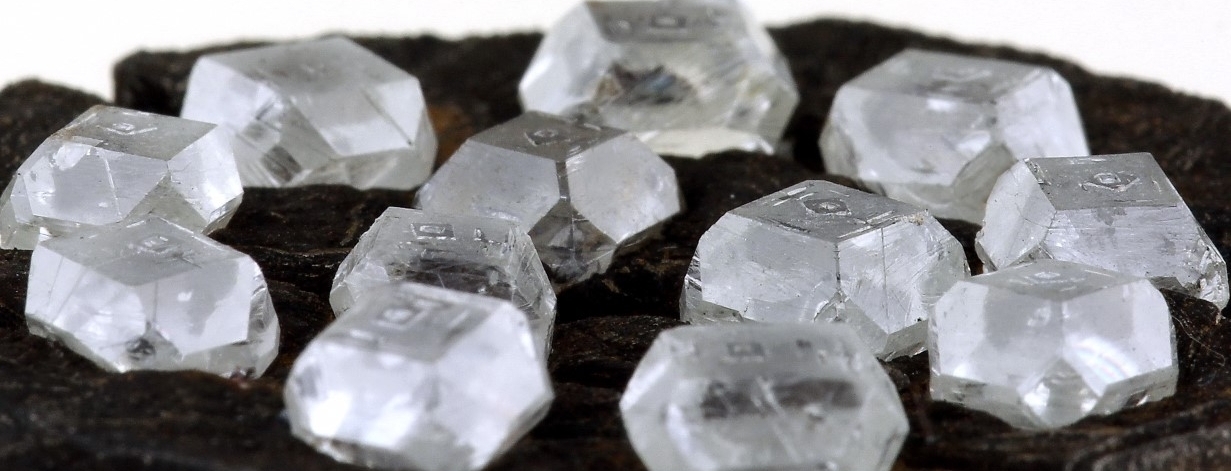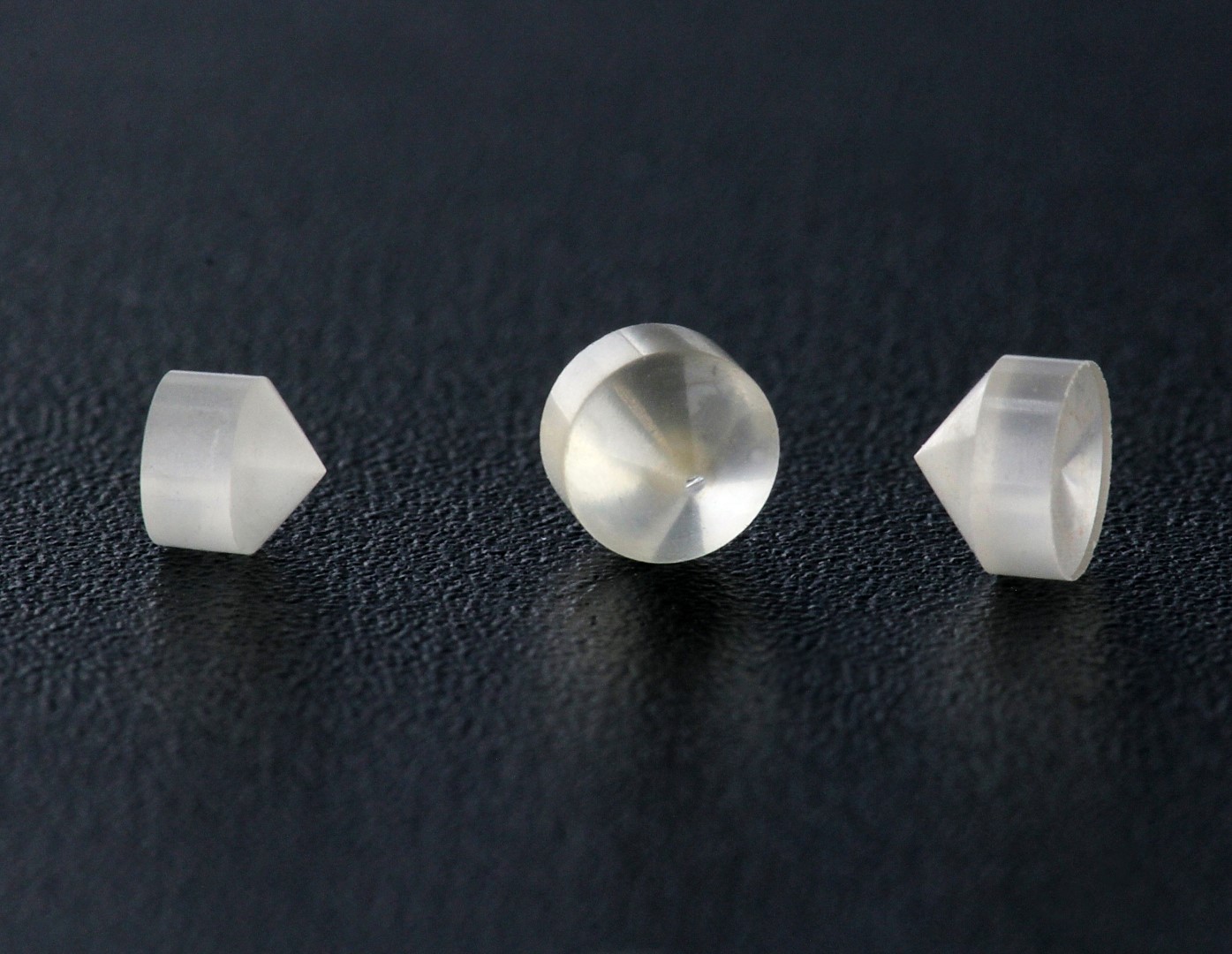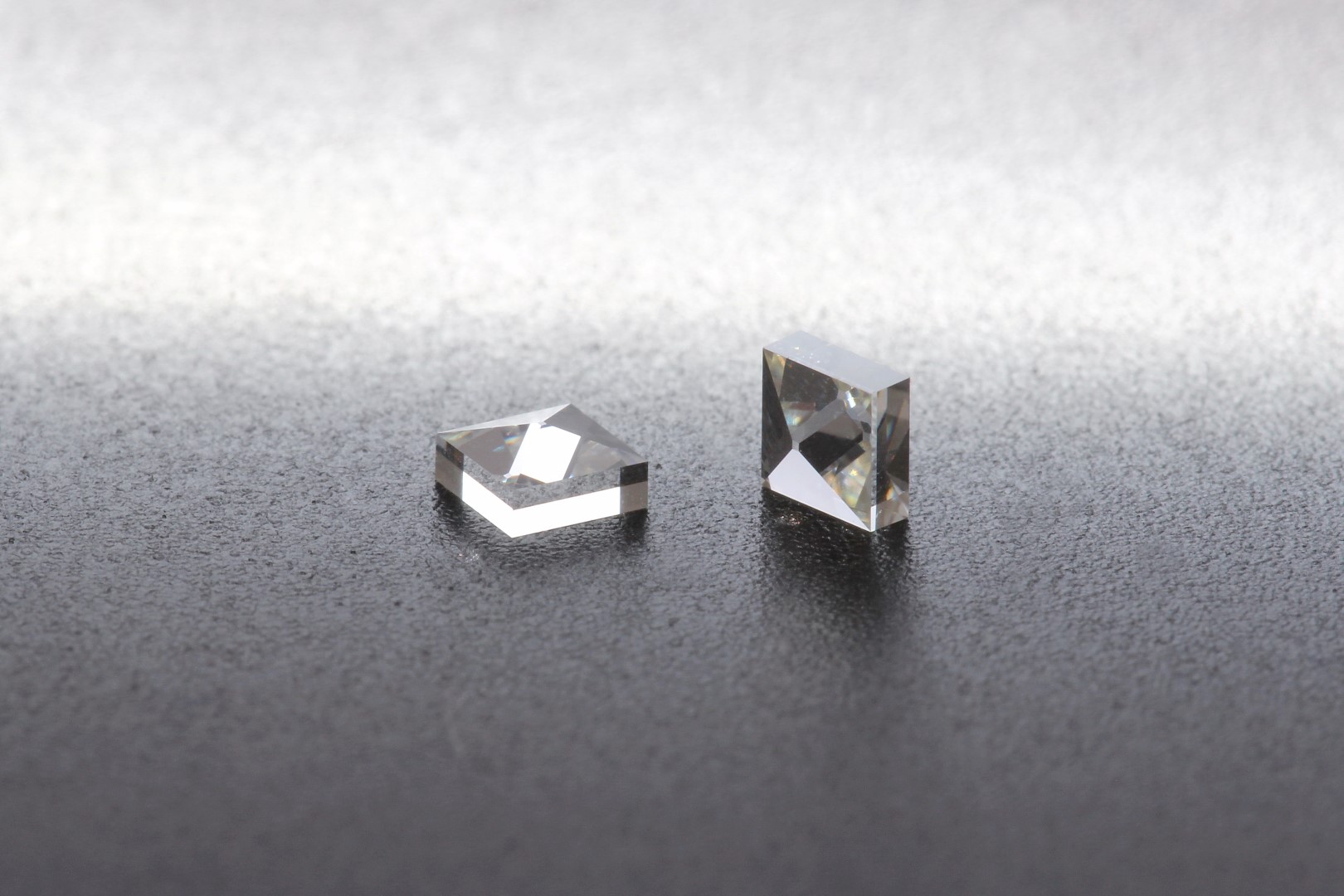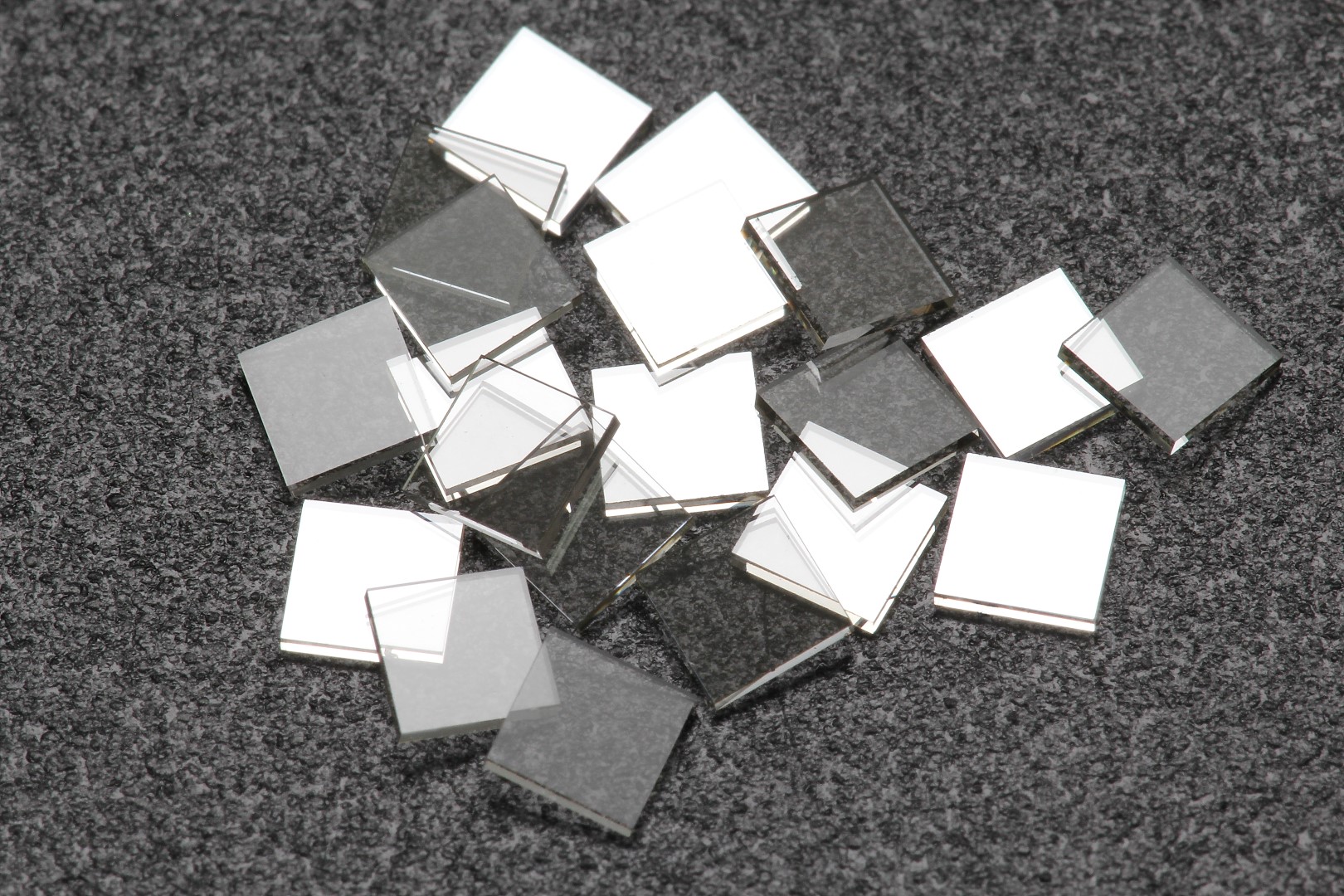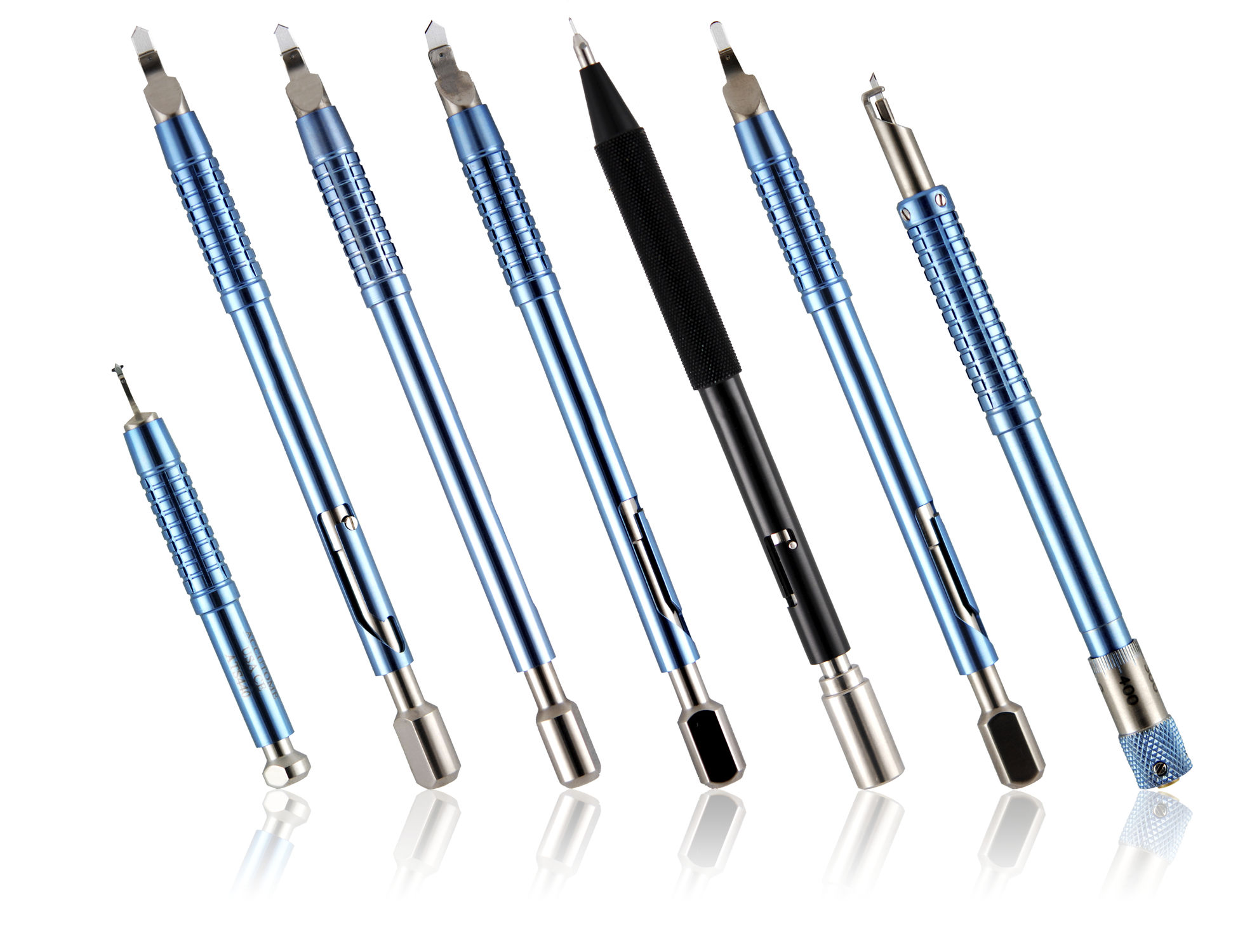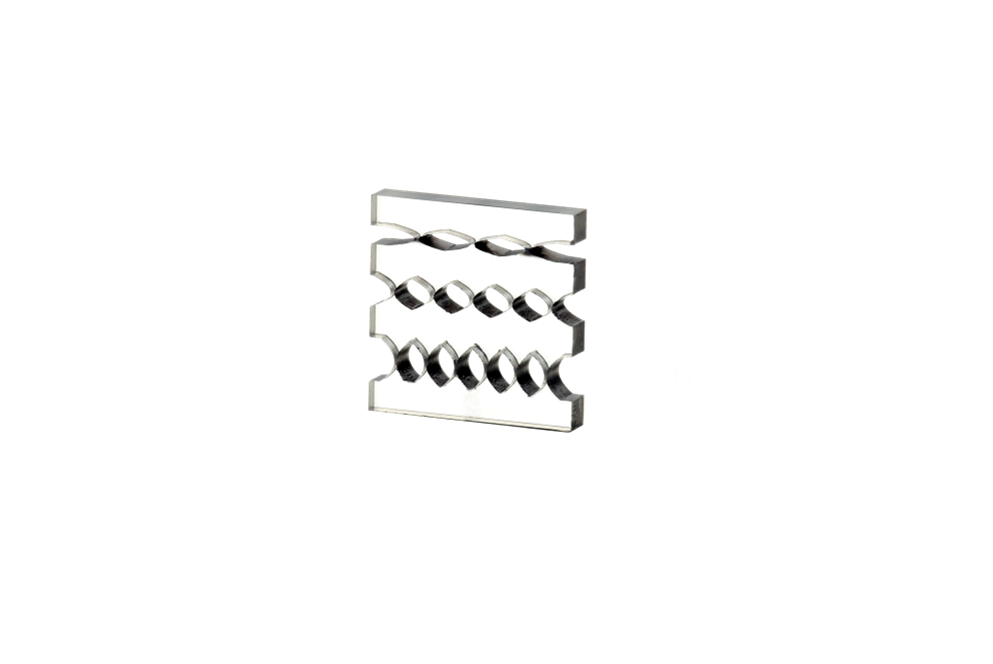
Lab diamonds have the same crystal structure as mined diamonds: carbon atoms arranged in a cubic crystal structure. High quality lab diamonds have the same optical and physical properties as natural diamonds.
Because the growth process is similar to natural diamond growth, there are still variations in color and clarity of lab created diamonds. In other words, not all lab grown diamonds are colorless and flawless. Man-made diamonds are graded on the exact same criteria as mined diamonds (the Four Cs), by the same independent gemological laboratories that grade earth-extracted diamonds.
Unlike cheap diamond simulants, such as cubic zirconia and moissanite, lab diamonds offered by Ada Diamonds have indistinguishable brilliance, scintillation, flash, and fire when compared to mined diamonds. Trained gemologists cannot tell the difference between our diamonds and natural diamonds without specialized laboratory equipment.
Ada Diamonds proudly offers only laboratory-grown diamonds in our fine jewelry. Compared to mined diamonds, our sustainably cultured diamonds have fewer impurities and fewer defects. This makes our diamonds whiter, brighter, and stronger than the vast majority of mined diamonds.
HOW IS A DIAMOND GROWN?
By Replicating the Conditions Within the Earth in Which Carbon Crystallizes into Diamond

The ability to grow diamonds is one of the most precise and difficult manufacturing techniques that humans have ever achieved. It took almost 60 years of effort to develop the precision to grow gemstone quality diamonds.
Today, there are two methods of growing diamond gemstones: High Pressure-High Temperature (HPHT) & Chemical Vapor Deposition (CVD). Each process is best suited for certain sizes & colors of diamonds.
High Pressure High Temperature
HPHT diamond growth occurs within massive pressure cookers. Small diamond seeds are placed into a growth cell and graphite is inserted on top of the diamond seeds. The pressure cooker is heated to 1500°C and pressurized to approximately 70,000 times the pressure at sea level.
At this extreme temperature and pressure, the graphite in the growth cell is melted into liquid carbon and then carefully cooled into the strongest form of carbon: a diamond crystal.
Chemical Vapor Deposition
CVD diamond growth occurs within vacuum plasma reactors. Thin diamond plates are placed in a growth cell and hydrocarbon gas is injected into the reactor. High power microwaves break apart the molecules of the gas, and the carbon atoms precipitate onto the diamond plates, vertically growing the diamond atom by atom.
The resulting CVD diamonds are often subjected to extreme pressure to 'compress' the diamond. This additional step improves the quality of the diamond crystal, giving the diamond better color and light performance.
Common Misconceptions
There are many incorrect 'facts' promoted by the mined diamond lobby in order to create fear, uncertainty, and doubt about laboratory-grown diamonds. Below are the most common misconceptions, and here are the rest.
Misconception #1: Lab Diamonds are Cheap to Manufacture
This is the most common misconception and is completely false. De Beers self-reported costs to mine diamonds was $104 per carat (for rough diamonds) in 2015. The marginal cost to grow each diamond in a laboratory is many times the cost for De Beers and other mining operations to dig diamonds out of the Earth, even if you ignore the fixed costs of the machinery required to culture diamonds in a lab.
The costs to cut, polish, and grade diamonds is exactly the same, regardless of the origin: grown or mined.
Misconception #2: All Lab Diamonds are Colorless and Flawless
The process to grow diamonds in a laboratory is very similar to the geological growth process. The same types of inclusions and imperfections present in mined diamonds can also occur in lab diamonds. If the diamond crystal grows too fast, there can be minuscule cracks (feathers) in the diamond. There can also be small inclusions of trace elements or other growth defects that cause the diamond to be near-colorless or slightly included. Lab diamonds are independently graded on the exact same criteria as mined diamonds by the exact same independent gemological laboratories that also grade mined diamonds.
Misconception #3: Lab Diamonds are Going to Flood the Market
There are approximately 25 million carats of diamond gemstones that are mined, cut, and polished every year, with billions of carats more in existing mines. De Beers estimates its current diamond reserves at 479.7 million carats. To build production facilities large enough to generate one percent of the current mined supply would take hundreds of millions of dollars of capital expenditure to build the facility and tens of millions of dollars a year to run the facility. It will take many years before lab diamonds are anything but an extremely small portion of the total diamond market.
Misconception #4: Mined Diamond Prices are Reduced by Lab Diamonds
This misconception hinges on three incorrect assumptions:
Diamonds are rare (see below)
There will be enough diamonds grown in a labs around the world to reduce that rarity (see Misconception #3)
It is cheaper to grow diamonds than it is to mine them (see Misconception #1)
While mined fancy colored diamonds and large investment grade diamonds are quite rare, there are currently over one billion carats of diamond gemstones owned globally. Experts estimate that the Baby Boomer Generation in the United States owns over 500 million carats of diamond gemstones which will be inherited or resold in the next few decades. Ada believes the much larger threat to the value of mined diamonds is the recycling and resale of previously mined diamonds.
Misconception #5: The Industry Only Exists to Make Gemstones
In fact, the main reason that the diamond industry exists is not to grow diamond gemstones but instead to grow functional diamonds for industrial, computational, health care, and scientific applications.
AN INVESTMENT IN THE FUTURE
Lab Diamonds are Advancing Computing, Medicine, Manufacturing, Communication, and More

The purpose and main goal of the lab grown diamond industry is not to grow diamond gemstones. The main purpose of the lab diamond industry is for high tech applications of diamonds such as laser lenses, surgical knives, water purification devices, high pressure anvils, semi-conductors, and more.
The price of each of these functional diamonds is more than the prices of a diamond gemstone of the same size. Thus, only grown diamonds that are not perfect enough for high tech applications are cut and polished and sold to consumers as gemstones.
When you purchase a lab grown diamond, you are investing in the future of humanity. Your purchase of a lab grown diamond directly funds research and development efforts to improve the use and efficiency of lab diamonds in the next generation of technological advancement and achievement.







